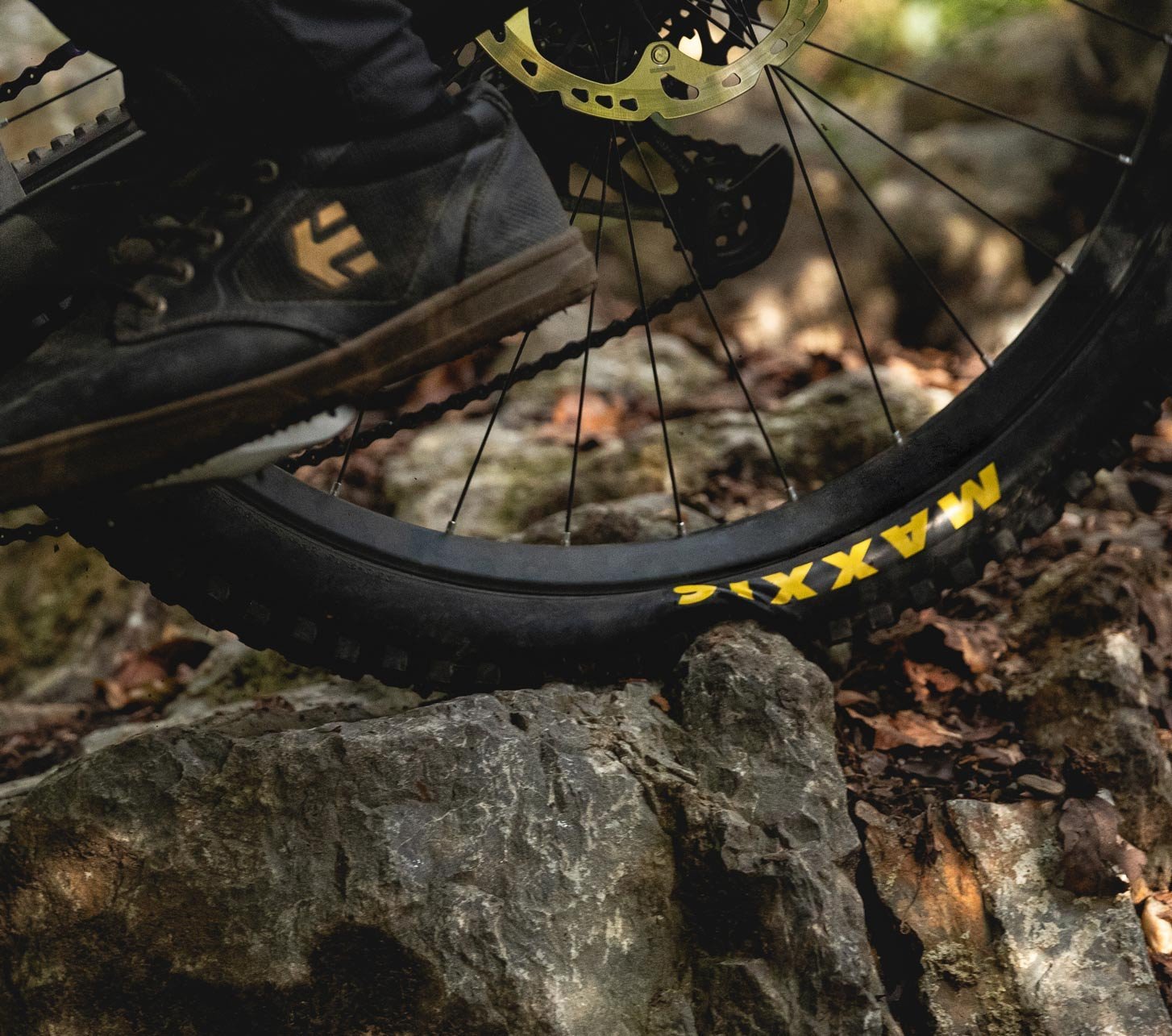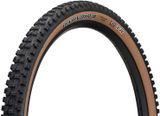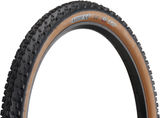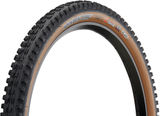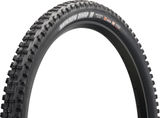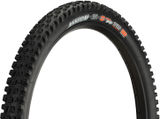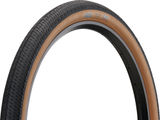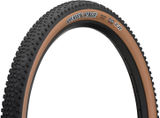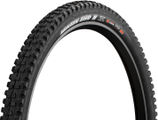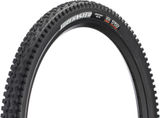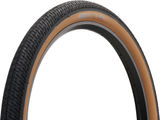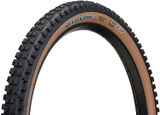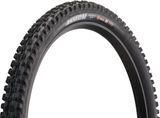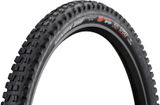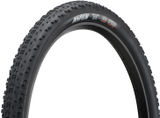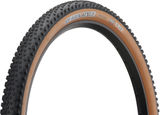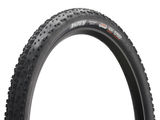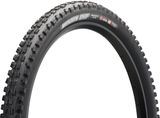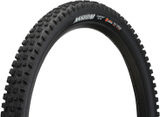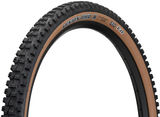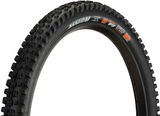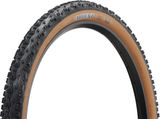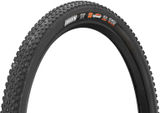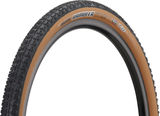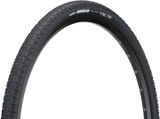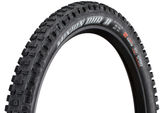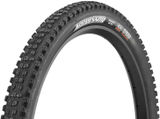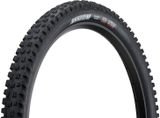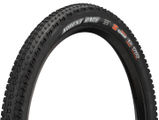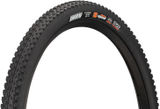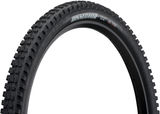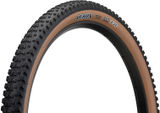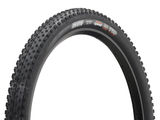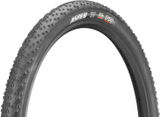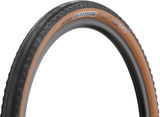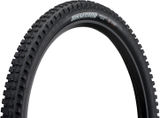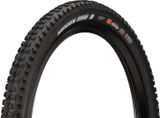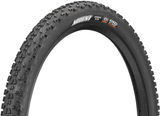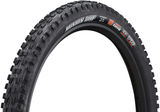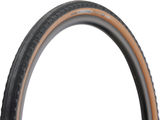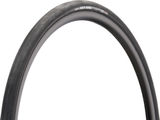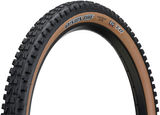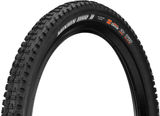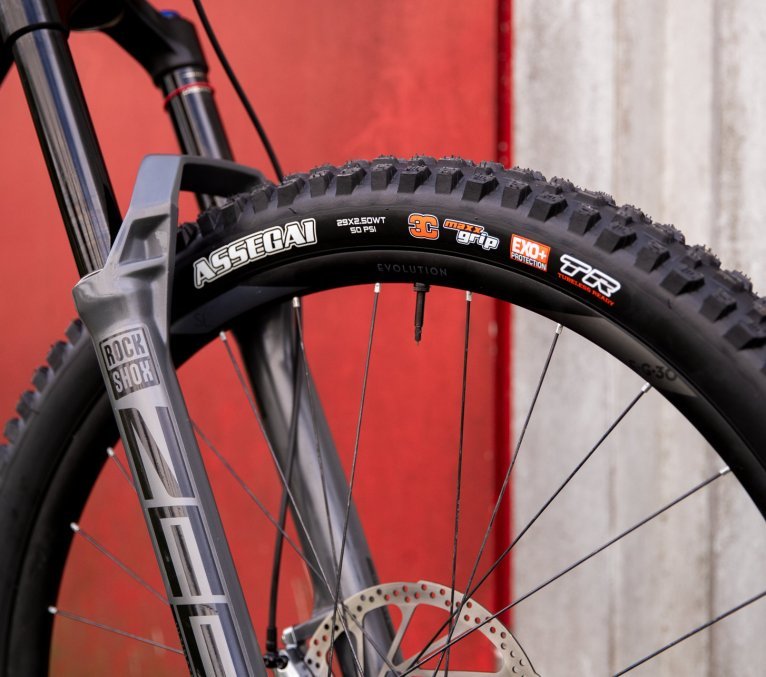
Tyre manufacturer Maxxis was founded in 1967, and only produced bicycle tyres in the beginning. Over time, the company has developed into a global brand that produces high-performance tyres for every purpose and vehicle. The development and production of bicycle tyres for city & touring via road bike to downhill, cross country, freeride or BMX continues to be an important area of business for the American manufacturer.
More about Maxxis
What does 3C mean, what is the difference between EXO and EXO+ and what does this WT actually stand for? We shed light on the jungle of abbreviations and explain the technology behind Maxxis.
TR (Tubeless Ready)
Schlauchlose Reifen beim Fahrrad haben viele Vorteile. Du kannst mit weniger Luftdruck fahren und erlangst dadurch bessere Traktion, der Rollwiderstand ist geringer als mit Schlauch und mit einem Dichtmittel statt Schlauch sinkt das Pannenrisiko drastisch, da kleine Löcher einfach abgedichtet werden. Am Mountainbike wird im Wettkampf fast nur noch Tubeless gefahren und auch beim Rennrad steigt die Zahl der Nutzer kontinuierlich. Du erkennst die Tubeless-fähigen Maxxis-Reifen an dem Kürzel TR.
WT (Wide Trail)
Wide Trail-Reifen sind von ihrer Form im Querschnitt auf breitere Felgen optimiert, wie sie heutzutage meist gefahren werden. Traditionelle Reifen wurden für schmale Felgen entwickelt, erhalten auf breiten Felgen eine zu eckige Form und bieten damit keine optimale Performance. Die Wide Trail-Enduro-Reifen funktionieren am besten auf Felgen mit 30-35mm Maulweite, während die Wide Trail-CrossCountry-Reifen am besten auf Felgen mit Maulweiten zwischen 25 und 30mm sitzen.
Maxxis rubber compounds explained
3C Triple Compound
Triple Compound tires combine 3 different rubber compounds to optimize riding characteristics. A harder base compound under the tread works together with the carcass to provide the tire's overall stiffness. On the center tread, which is the contact area with the ground, a softer compound is used, offering more grip, traction, and damping, while not wearing out excessively fast. The sidewall knobs then use the softest of the 3 compounds to ensure necessary grip, for example, on open corners. Triple Compound tires tend to be a bit pricier due to their more complex manufacturing process, but in return, they deliver the necessary performance for demanding, ambitious riders and in racing settings to get the most out of the bike. They are exclusively used in the mountain bike segment by Maxxis.
3C MaxxSpeed
The fastest and hardest mix of the Triple Compounds. It's primarily used on XC tires, but also on fast, dry-condition trail tires and shines with low rolling resistance and long durability, yet it has its limits on very loose soils and in wet conditions.
3C MaxxTerra
The trail variant in the medium-hard composition. It combines good rolling resistance with solid traction and enough grip for trail riding, even in wet conditions and on loose ground. The golden middle ground, even in technical situations.
3C MaxxGrip
The softest combination of rubber compounds. MaxxGrip provides unbeatable grip and the best damping characteristics for superior performance on hard, steep enduro trails and on the downhill track.
Dual Compound
Dual Compound tires merge 2 different rubber compounds into one tread. The harder compound is in the center tread to keep rolling resistance and wear to a minimum. The softer compound is used on the sidewall knobs to ensure cornering grip.
Dual Compound tires are usually cheaper than 3C models because they are simpler to manufacture. For lighter use in slightly less demanding or dry terrain, a Dual Compound tire is sufficient. Hence, for example, all Maxxis gravel tires are outfitted with the Dual Compound blend.
Single Compound
Maxxis' Single Compound tires consistently rely on a single rubber compound, tailored to the intended use. You can find the Single Compound models in the cross-country, road, and city tire segments.
MaxxSpeed
The Single Compound MaxxSpeed rubber blend is strictly optimized for Cross-Country Race. Even faster than the 3C MaxxSpeed mix, Maxxis has managed to reduce rolling resistance by another 25%.
HYPR
This rubber compound is used in Maxxis road tires. Compared to the previous race compound, HYPR has about 20% less rolling resistance and even better wet grip. The lifespan of the tires has remained consistent.
4 Season Compound
A city bike tire must offer safety in all conditions: dry, wet, cold, and slushy snow. With experience in the automotive sector for all-season tires, Maxxis has successfully transferred this technology. For intensive cargo bike use, Maxxis also has the 4 Season HighMileage rubber compound in their lineup, boasting a typical lifespan of over 10,000 km.
MPC
The Maxxis Performance Compound (MPC) is Maxxis' all-rounder mix. This rubber compound also benefits from the development expertise of the world's largest bicycle tire manufacturer and impresses in daily use with a very long lifespan, grip, and utmost reliability.
Maxxis carcass technology explained
SilkShield
SilkShield is the puncture protection layer in Maxxis gravel tires. It effectively guards against cuts and punctures.
MaxxShield
MaxxShield is the advanced puncture protection for road and gravel. Maxxis takes the all-around SilkShield protection and adds a K2 Layer (Kevlar Composite) for the best possible protection.
EXO Protection
The basic protection against cuts and punctures for mountain bike and gravel tires. EXO Protection is densely woven yet lightweight and flexible. Perfect for cross-country and trail riding, and for lighter riders.
EXO+ Protection
This enhancement to EXO Protection adds a reinforced, rubberized puncture protection layer to the tire sidewall, making the tire even more resistant to cuts from sharp rocks. At the same time, the carcass becomes stiffer, which is particularly beneficial at low air pressures. Suitable for trail and moderate enduro use.
DD DoubleDown
As the name suggests, Maxxis DoubleDown tires feature two casing layers with 120 TPI, further reinforced with a butyl insert in the sidewall. The ideal casing for tough and alpine enduro tracks.
DH Casing
The strongest casing in Maxxis’ lineup. Like DoubleDown, this features two casings, but with even stronger 60 TPI inserts. The side butyl insert stiffens the tire and offers additional puncture protection. The best choice for intense enduro tracks and rocky downhill courses.

